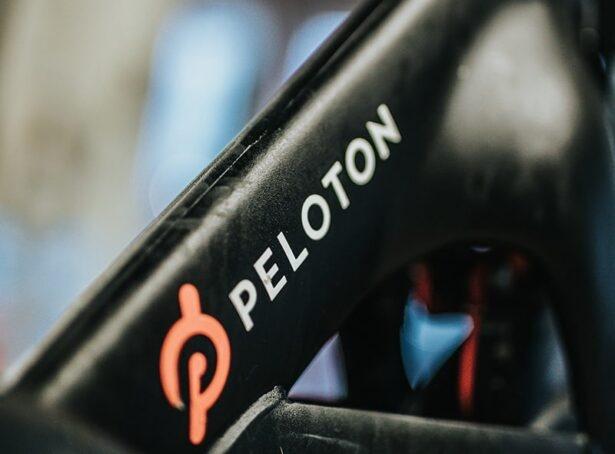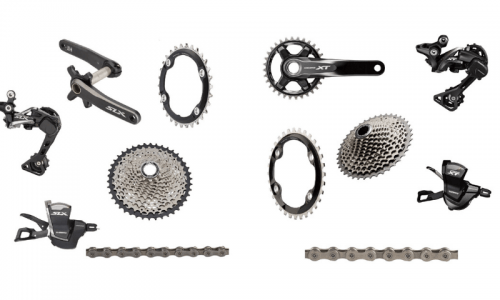When the Peloton was released, it changed indoor cycling forever. We no longer had to jump in the car, drive to the local studio, set up a bike, and wait to hope your favorite instructor turned up.
Now you just need to get dressed and jump on your bike to enjoy your favorite ride.
This was excellent, and it motivated many people to exercise more often, but it left many unanswered questions for indoor cyclists that they couldn’t ask their instructor. We often get asked how to plan a Peloton fitness regimen. In this article, we’re going to speak about:
- Why Is It Important To Have A Fitness Plan?
- How To Set Your Goals And Track Progress
- Picking The Correct Workouts
- Scheduling Your Workouts

Why is it important to have a fitness plan?
As a personal trainer and cycling coach, I have always told anyone wanting to train to have a goal in mind. Here’s why it’s vital:
To Hit Goals
Having a fitness plan makes it so much easier to hit goals. It means you can follow a process that will give you the best chance of getting you to where you want to be in a timely manner.
Motivation
Having a goal is great to keep you motivated. It can drive you to get up on those early mornings and take on those tougher workouts. When you know there’s a beginning and an end to a fitness plan, it is easy to stay committed.
Accountability
Having a fitness plan makes you accountable for the process. If you have it all written down and you know what you need to do, then you are the only one to blame if it doesn’t get done. A lot of people use a personal trainer purely for accountability.
Structure
Having a structure makes training so much easier. It goes from doing as much as you feel you can to knowing exactly what you need to do and when. It not only helps you train harder but smarter with optimum recovery too.
Step One: How To Set Goals And Track Progress
So it’s vital to have some goals set for yourself. We believe it’s important to set the correct goals for you, and the best way to do this is by using the SMART goals system.
| S | Specific goals: This could be weight loss, gaining power, or muscle growth. | Lose one stone |
| M | Measurable Goals: How are you going to measure your progress? | I will step on the scale once per week to measure. |
| A | Achievable Goals: Is the goal achievable for you as a person, be realistic. | Yes, losing one stone is achievable for me |
| R | Relevant Goals: Is this goal relevant for the big picture of what you want. | As I am trying to get fitter, yes , losing weight helps. |
| T | Time Bound: Is the time frame correct for the goal you wish to achieve? | I would like to aim for eight weeks |
Using these factors, you can ensure that you get the perfect goal for you to smash. We have used weight loss as an example, as this is a common goal for many cyclists.
Tracking Progress
Then we come to tracking progress, which is very important when having a Peloton workout routine. It’s important to know it’s working and you are seeing progress for your hard work.
Here’s an example of us tracking our weight loss goal to eventually hitting it.
| Week 1 | 2 lbs lost |
| Week 2 | 2 lbs lost |
| Week 3 | 2 lbs lost |
| Week 4 | 1 lb lost |
| Week 5 | 0 lb lost |
| Week 6 | 3 lbs lost |
| Week 7 | 2 lbs lost |
| Week 8 | 2 lbs lost |
| Total | 1 Stone |
It’s vital to track your progress to ensure that you are going in the right direction. You could do the same if you were trying to gain power by doing a power test every few weeks.

Step Two: Picking The Correct Workouts For You
So now you have a goal, a time frame, and you know how to track it. You need to start planning your workouts.
Here are the classes we recommend breaking workouts down into:
High Intensity
- Intervals
- High Power Workouts
- Testing Sessions
A high-intensity spinning workout will typically burn a good amount of calories and help you train those muscles to become more powerful. They can be anywhere from 20 minutes to about 40 minutes long.
These are best for burning calories fast and building high power. Great if you are short on time but do require more recovery.
Endurance
- Low Power Workouts
- Base Mile Sessions
An endurance session is great for burning a lot of calories and improving your ability to sustain a workout for a long period of time. Typically these sessions are between 1 to 3 hours or more.
Endurance sessions are excellent for burning a lot of calories with minimal recovery. Perfect for someone who doesn’t mind a longer ride and wants to burn many calories.
Strength
- Strength Workouts
Strength training is fantastic if you plan to burn calories, define muscle, and improve power. It’s not on the bike training but can be done with your body or Peloton hand weights.
Exercises like squats and lunges are fantastic for building power and burning calories after the workout in recovery.
Recovery
- Yoga
- Stretching
Recovery sessions are great to help you make progress. They can ensure the time you spend off the bike is going to be very valuable, and when you get back on, you will be ready to go.
Recovery sessions don’t burn many calories but are great for your progress in injury prevention.
We recommend picking a good mix of workouts that will be best at helping you achieve your goals. High-intensity and strength sessions will be best if you want to gain power.
Endurance and high-intensity sessions would be excellent for losing weight.
Scheduling Your Workouts
So you know what your goal is and what kind of workouts will be best for it. Now we need to make a plan for you to stick to.
This is the easy bit, but here before we get into it, there are some rules we recommend following.
| Rule 1 | Never do high intensity or strength sessions back to back days |
| Rule 2 | Ensure testing sessions, weigh ins, or measuring to ensure progress |
| Rule 3 | Do a mix of sessions you enjoy and sessions that will benefit you goals |
| Rule 4 | Listen to your body. If you’re to tired take a rest day |
| Rule 5 | Stay consistent little and often is better than lots irregularly |
With this in mind, we can make a weekly planner which gradually builds you up while ensuring you are testing.
Here’s an example of a schedule for a rider wanting to build power quickly. This is the first four weeks for someone looking to train 5-6 times a week.
| Monday | Tuesday | Wednesday | Thursday | Friday | Saturday | Sunday |
| High Intensity | Recovery | Strength | Endurance | Rest Day | High Intensity | Recovery |
| High Intensity | Endurance | Strength | Rest Day | High Intensity | Endurance | Recovery |
| TESTING | Recovery | Endurance | Endurance | Endurance | Recovery | Rest Day |
| High Intensity | Recovery | High Intensity | Rest Day | High Intensity | Recovery | Rest Day |
If you wanted to go more in-depth, you could even spend an hour picking each ride or workout, and the instructor you want. The more time you spend planning, the better experience you are going to have.
Conclusion
When it comes to using your Peloton bike, you will get a lot more out of it by planning ahead and not just jumping on for any workout. We hope you enjoyed our article and now understand how to plan your training for the goals you might have.

Robbie Ferri has spent years working in a bike shop, has worked with industry leading brands on product creation, has been a semi pro athlete, and is a fully qualified strength and conditioning coach. He has broken World Records, bikepacked all over the World and raced ultra distance at a top-level.

![How To Convert From Quill To Modern Threadless Stem [With A Quill Stem Adapter] How To Convert From Quill To Modern Threadless Stem [With A Quill Stem Adapter]](https://biketestreviews.com/wp/wp-content/uploads/2023/05/Fitting-A-Quill-Stem-Adapter-min-500x300.jpg)
